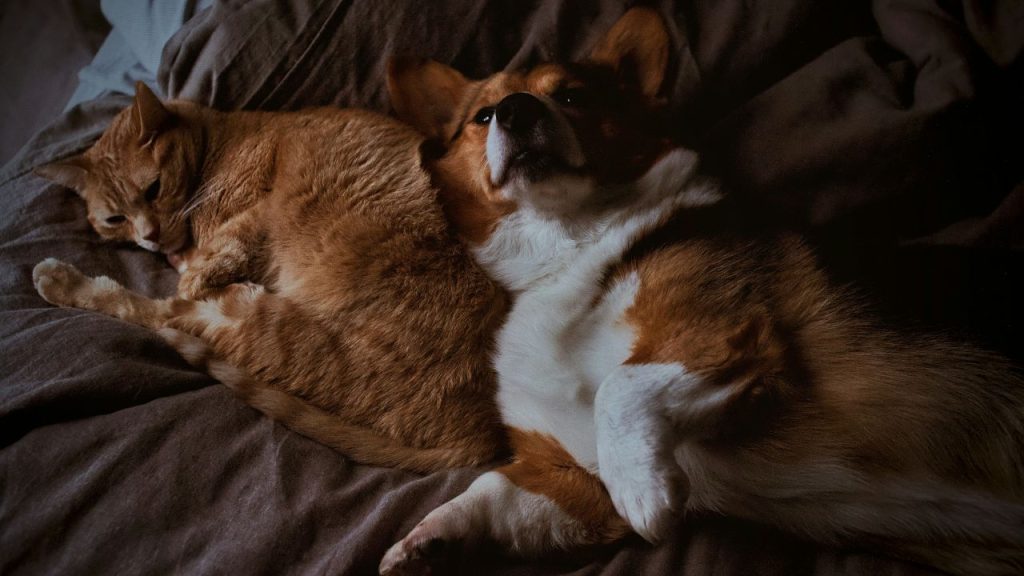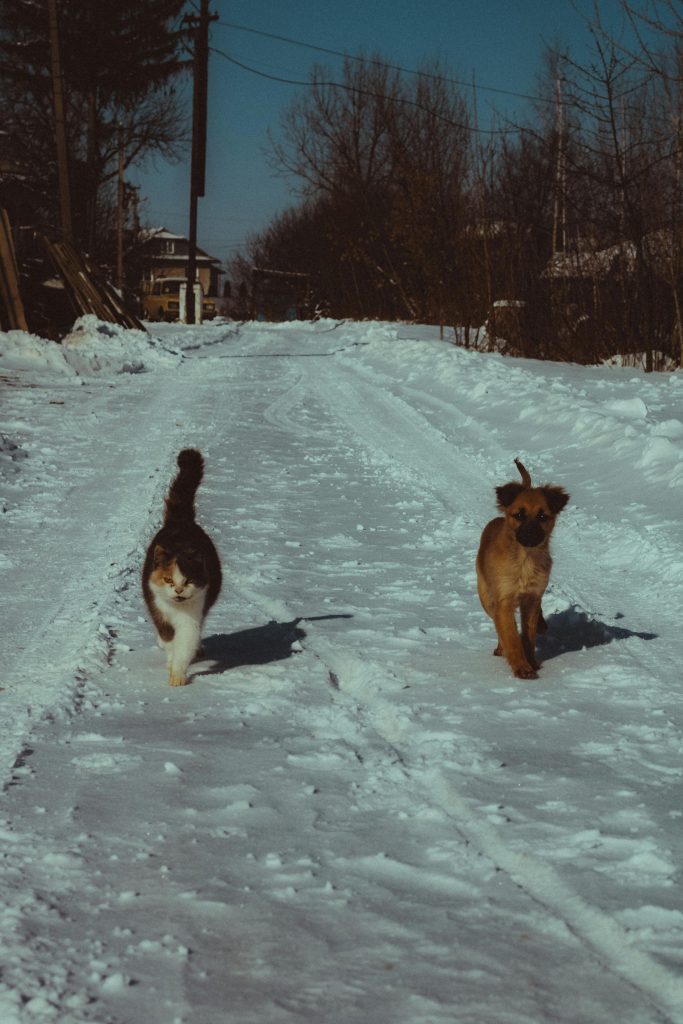“You’re either a dog person or a cat person”. Now there’s a statement you’re sure to have heard a few times. I’ve spent a long time trying to describe myself as one or the other and then realised that I was in fact an animal person. No distinction required. But it got me to thinking. Was the reason you are either a dog person or a cat person because the two are considered to be polar opposites? Incompatible? On further investigation and years of living with both dogs and cats I concluded that these two animals are in fact very similar.

In fact, if we really drill into it – it is clear that both dogs and cats have the ability to live in harmonious relationships with us – actual polar opposites. Therefore, is it not feasible that they can learn to live with each other? Maybe even enjoy it? Because of course when you realise how different our pets are to us, you begin to see just how adaptable they are, and subsequently how alike dogs and cats are to each other.

These similarities are probably illustrated best by looking into a predator’s mind. Dogs and cats are hunters and they live by the rules of hunters. This allows them to share some common features. Injury means an inability to hunt effectively and predators, under normal circumstances, cannot afford injury. It doesn’t matter that neither dogs nor cats need to hunt to survive in their modern-day homes. Their genetic make up is that of predators.
The dog and cat relationship exploits this hunter pedigree and both species act to avoid injury as much as possible. Social warning strategies are in place to prevent attack. A dog or a cat will give a clear pre attack signal and the signals are very similar for both species. The signal is not a prelude to an actual attack but rather an attempt to avoid attack. The dog or cat says “stop your current behaviour or else I will bite/scratch/maim”. Ideally the dog or cat wants to walk away without inflicting or receiving damage and they aim to reach a compromise position where threatening behaviour is stopped and replaced.

This kind of communication is understood via a mixture of common predator signals. Anatomical (e.g. muzzle shape, tails, claws etc) and behavioural (e.g. lip licks, eye blinks, teeth show) similarities have allowed cross species communication between the dog and the cat. Flattening the ears and drawing back the lips mean exactly the same thing whether you are a dog or a cat (or indeed any predator). There are of course some species differences. The tail wag of a dog has a different meaning to the tail wag of a cat, for instance.
Additional consideration for the sociability of these two species provides further evidence for their similar language. Cats are more social than once believed. Feral and farm cat colonies exist the world over and suggest the capacity for convivial relationships. Indeed, multi cat households are common with bonded cats often playing and sleeping together. The social difference between the two is actually in hunting strategy. The cat is a solitary hunter and the dog is a group hunter (although will hunt solo if required).

So, why does it go wrong? It depends. Signals get misinterpreted and prior learned responses impact behaviour. You’ll undoubtedly have noticed that a cat’s first response to a threat is to run away. Unfamiliar dogs are threats. You may also have noticed that our movement orientated dogs chase. Cats run. Dogs chase. Misinterpretation.
Can this be avoided? To some extent, yes. It is theoretically possible to teach any dog to accept any cat and vice versa. The key is socialisation. Comprehensive inter-species socialisation is vital. When dogs and cats gain experience of each other in early weeks, they are equipped to deal with each other as adult animals. However, sometimes introductions need to be made with older animals that have no experience of the other species.

Listed are some guidelines for when this happens:
- For the first 5-7days keep the animals in separate areas
- Use lots of high value treats (e.g. chicken) so both animals come to associate the good stuff with the other animal
- Do not punish. This is a learning process
- Be patient
- For the second week use a temporary restriction such as a baby gate
- Leave the gate in place for the next couple of weeks so the cat can always get away
- Use a cat carrier to bring the cat safely in the same room as the dog
- Place the cat carrier higher up than the dog (e.g. on a shelf) so both animals can can safely scent each other
- Use lots of high value treats (e.g. chicken) so both animals come to associate the good stuff with the other animal
- Stay and do not reprimand either animal
- Use height (e.g. shelves) to help the cat feel safe
- Never leave the animals alone
- Use a loose trailing lead so you can remove the dog without fuss
- Use lots of high value treats (e.g. chicken) so both animals come to associate the good stuff with the other animal
- Be patient

